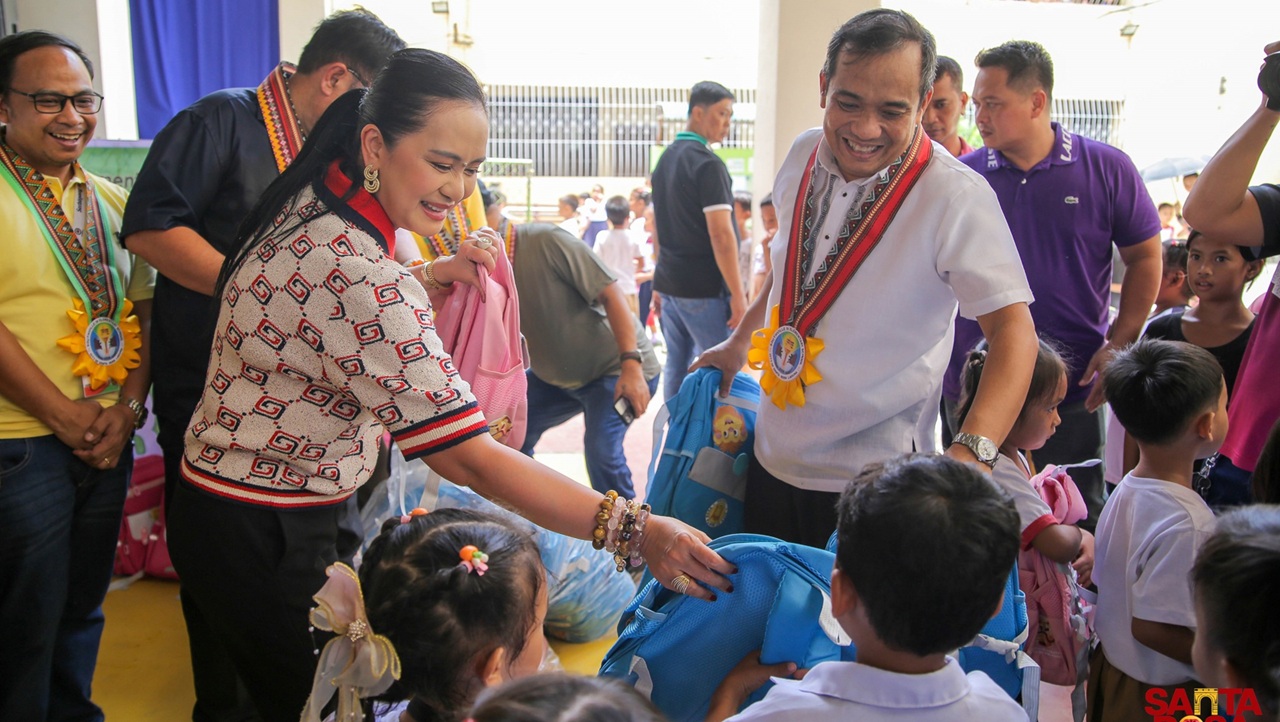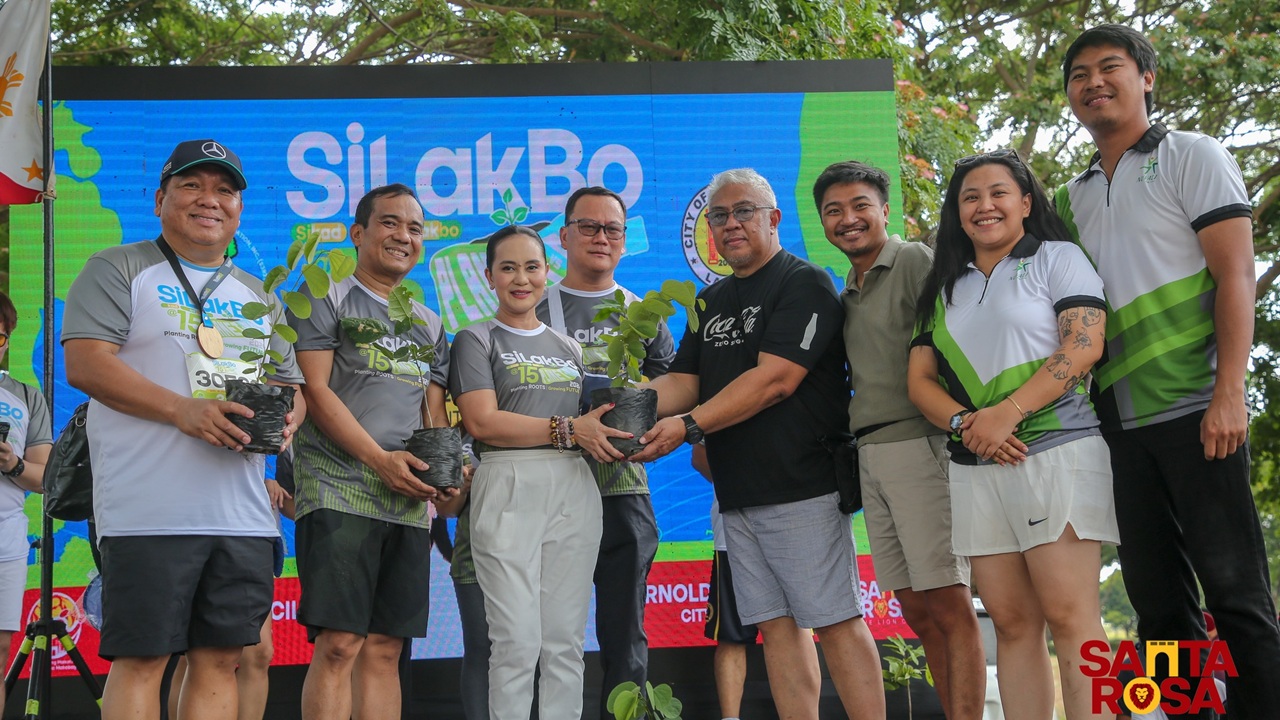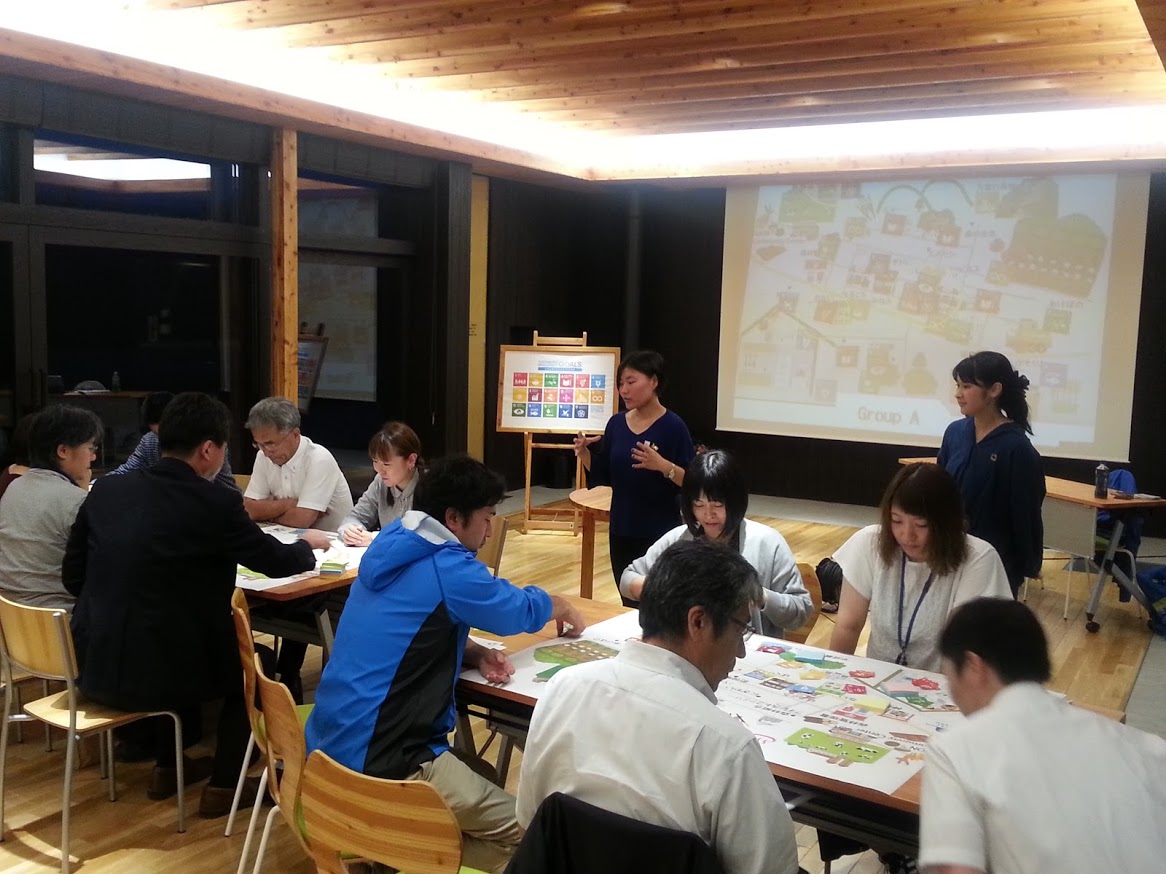
In my work supporting sustainable development across Asian cities, one phrase comes up again and again: stakeholder engagement.
Stakeholder engagement sits at the center of nearly every debate on sustainable development. This often-vague phrase—which begs the questions, who are these stakeholders exactly, what form of engagement is sought after, and what does engagement actually build—is meant to ensure that people and communities shape the policies affecting them, leading to more inclusive, effective, and lasting outcomes. Yet, it is increasingly treated as a procedural requirement with limited impact.
What if participation wasn’t a box to tick, but a shift in the way cities, their leaders, and their residents relate to one another?
Santa Rosa City in the Philippines and Shimokawa Town in Japan offer two very different, yet complementary, ways of engaging residents to co-create sustainable development solutions to local problems. Santa Rosa is a fast-growing city on the outskirts of Metro Manila, the capital of the Philippines. Shimokawa is a small town navigating depopulation in the far north of Hokkaido, Japan. Differences aside, both are discovering that what matters most isn’t the size of the budget or the number of workshops. It’s trust—and the patient work of building it.
Stakeholder Engagement: With Whom and for What?
Stakeholder engagement transforms sustainable urban development by empowering communities to work alongside local officials in shaping the policies that affect them.
Stakeholder engagement actively involves people, groups, or organizations who have a stake (an interest or concern) in the development and implementation of a policy, project, or decision. This can take many forms. Engagement usually includes identifying stakeholders (who has a stake?), informing them about the initiative, and creating ways for them to voice their views and shape the outcome.
Champions of stakeholder engagement argue that it leads to better decisions and more sustainable outcomes. Stakeholders bring diverse perspectives and local knowledge that help identify pressing problems, build consensus, and co-create solutions. When people feel heard by local leaders, they are more likely to trust both outcome of policies and the institutions behind them. Stakeholder engagement also strengthens accountability, as officials must explain their decisions and consider external input.
This leads to the question: who is actually being engaged? The term stakeholder signals a more inclusive form of government. It refers to all those with a stake in a decision or policy, oftentimes extending beyond local residents. In sustainable development, stakeholders may include neighborhood groups, private companies, nonprofits, vulnerable or minority populations, academia, and external actors such as investors, government agencies, or neighboring jurisdictions.
This diverse group, gathered under the umbrella of stakeholder, reaches beyond terms like citizen or resident, highlighting the many people, communities, and actors that have a legitimate interest in local sustainable development. This inclusivity is critical when tackling complex challenges—like climate action, housing, or urban planning—that cut across different sectors and communities. One of the biggest challenges is identifying who to engage with and how to reach those who are often left out. As a rule of thumb, outreach should prioritize traditionally marginalized and hard-to-reach populations, people who may feel disconnected from local government and whose voices are rarely heard compared to more vocal or well-organized interest groups.
Done well, stakeholder engagement is transformative. Done poorly, it turns performative, another box in the policymaking checklist.
The Dangers of “Tick-Box” Stakeholder Engagement
Not all stakeholder engagement processes are created equal. Poorly planned processes come with familiar pitfalls that can quickly erode trust. I won’t try to list them all, but some show up too often to ignore.
One of the biggest risks is reducing engagement to a tick-box exercise: one done quickly to satisfy a legal requirement. These processes are often superficial—limited to a public meeting or generic survey—and miss the critical insights emerging from carefully listening to the community. The lack of interest always shows. People can tell when a consultation is merely a token formality, damaging trust in local officials.
Tick-box engagement also happens when authorities give no real influence to participants. When involvement is performative—when decisions are already made and input is ignored—the result is cynicism and mistrust. Reducing participation to a performance loses the deeper value of civic relationships.
Another common pitfall is failing to close the loop. In such cases, local authorities don’t report back on how input was used. Stakeholders are left wondering: did any of this matter? Poor communication discourages future participation: no one wants to feel ignored. And this isn’t limited to token efforts; it even happens in well-meaning processes. Local leaders need to build communication channels to share what was heard, how it shaped decisions, and clearly articulate why certain suggestions were or weren’t adopted.
Sometimes, engagement begins with big promises but ends in disappointment. Managing expectations from the start is essential. People need to understand how decisions will be made and what influence they’ll actually have. If they believe they don’t hold real power—when their role is merely consultative—they may feel misled. Transparency about the level of influence helps prevent disillusionment when final decisions don’t reflect everyone’s input.
Santa Rosa and Shimokawa reimagined engagement: less about box-ticking and more about building trust.

Santa Rosa City, Listening as Practice
The city of Santa Rosa is located in the province of Laguna, Philippines, some 40 kilometers south of Manila, the national capital. The city is a major industrial hub that anchors much of the country’s automotive manufacturing sector, hosting factories of companies like Toyota, Nissan, and Mitsubishi.
Its economic vitality and proximity to Manila have accelerated population growth in recent years, adding layers of complexity to sustainable development planning. Santa Rosa had a population of over 400,000 people in 2020, more than double its population two decades earlier. The city is subdivided into 18 barangays, a local government unit in the Philippines with publicly elected barangay captains and councils, as well as their own budget.
Under the leadership of Mayor Arlene Arcillas, Santa Rosa’s sustainable development efforts have been framed around three pillars: people-centered, looking after people’s development concerns; resource-based, as the city is aware of the need for resources to implement projects and programs; and inclusive, so nobody is left behind as the city progresses. These three pillars are woven into the city’s development plans—including the comprehensive land use plan, the comprehensive development plan, and the smart city roadmap, among others—anchoring policymaking in sustainable development principles.
The Philippines requires local governments to engage with civil society organizations (CSOs), setting up a minimum threshold for CSO inclusion in certain specialized bodies. In line with this, Santa Rosa has a CSO plan to formalize its engagement and meet national requirements. Yet, Mayor Arcillas believes in deeper engagement and listening to people’s needs, going beyond the minimum requirements to reach out to more people, especially marginalised groups. Yet deeper listening soon surfaced unexpected challenges.
During some of the city’s workshops with civil society groups, local officials realized that sometimes participants requested programs that already existed. This came as a revelation. The problem wasn’t lack of action. It was a lack of effective communication. People were not aware of what the city was doing for them because the information hadn’t reached them in ways they could easily access.
For city officials, this became a turning point. It was a reminder that local action means little if people could not see or understand it. From that moment, the city began investing more in transparency, creating clearer communication channels and incorporating awareness building into the policy process itself.
Ever since this realization, Santa Rosa’s planning office doubled down on transparency. Currently major planning documents are publicly available on the city’s website, allowing residents to access these materials directly. This small but meaningful shift highlights how engagement isn’t confined to workshops. It continues in the open visibility of policy itself.
Stakeholder engagement has also sparked the development of new initiatives. For instance, the community gardens program of Santa Rosa emerged during barangay consultations. This program supports local farmers while simultaneously creating communal green spaces and boosting local food production. What began as a community-led proposal has since grown into a city-supported initiative: the number of gardens and community farms more than doubled between 2019 and 2023, rising from 14 to 29. These gardens are not only increasing local sustainable food production but, more importantly, they strengthen social cohesion and civic participation.
More recently, the city has completed its first voluntary local review process—a form of sustainability reporting based on the United Nation’s sustainable development goals (SDGs)—that required extensive engagement with stakeholders. The city conducted several online outreach campaigns and surveys to hear from its residents on their most pressing needs. Yet, aware that not everybody has internet access, Santa Rosa included more traditional modes of stakeholder engagement, including face-to-face interviews, in-person workshops, and focus group discussions to ensure that the voices of as many people as possible were heard.
Throughout this process, residents were hesitant at first, but grew more receptive and willing to participate as the city continued reaching out to them. Seeing tangible changes stemming from engagement processes—and even the implementation of new projects—helped to build trust with the city’s administration. But trust wasn’t one-sided. City officials also learned to trust residents. They went beyond merely listening to their needs and began to co-create solutions. Stakeholder engagement proved transformative, becoming a hallmark of the city’s approach to sustainable development.

Shimokawa Town: Slow Consensus, Deep Ownership
Shimokawa is a small town in the northernmost tip of Hokkaido, Japan. Situated in a largely forested and rural area, it is relatively isolated; Sapporo, the prefectural capital, lies around 140 kilometers south. Its development during the first half of the twentieth century was supported by forestry, mining, and agricultural industries. But in recent decades, the decline of its traditional industries has led to depopulation and an aging society. By 2025, less than 3,000 people called Shimokawa home—a sharp drop from its 1960 peak of 15,555—with a staggering 40% of inhabitants age 65 or older.
Facing these challenges, Shimokawa chose an unconventional path. Instead of attracting new economic sectors, local authorities bet on leveraging traditional forestry to sustainably support its economy and community well-being. To achieve this, Shimokawa leaned on its stakeholders to chart how to move forward.
Shimokawa’s journey spans over two decades. Since the early 2000s, the town envisioned a sustainable society that pays equal attention to the social, economic, and environmental aspects of development. This philosophy led in 2007 to the Shimokawa Town’s basic autonomy ordinance—its highest-level municipal law—which institutionalizes sustainability, resident-led governance, and integrated policymaking as cornerstones of Shimokawa’s subsequent approach to development.
Shortly after, the town joined national programs promoting local sustainability, being designated as an environmental model city (2008) and as an environmental future city (2011). These initiatives allowed Shimokawa to experiment with innovative solutions to its challenges. Over the years, Shimokawa gained insights into the challenges faced by small towns in advancing sustainability. This knowledge enabled the town to contribute when the national government when developed the municipal SDG guidelines, published in 2016.
Despite these achievements, residents felt somewhat disengaged from the work developed under national programs. Public sentiment was that participation in these initiatives was top-down and government-led. Although the benefits were clear, demand grew for a more resident-driven, participatory approach.
The town found itself at a crossroads. The environmental future city plan was scheduled to conclude in 2016, while the fifth Shimokawa comprehensive plan—the highest-level, all-encompassing policy framework for Japan’s local governments, which sets the vision and strategic development direction—was due for revision in 2018. It seemed like the perfect time to co-create a plan to guide the city’s future.
Shimokawa revisited its mid- and long-term aspirations, inviting residents to envision what an ideal Shimokawa would look like in 2030. The result was the “Shimokawa Challenge: Connecting People and Nature with the Future,” a local reconceptualization of the SDGs. Moving forward, the community embraced this clear roadmap to a future they co-created.
Shimokawa strategically engaged stakeholders. Rather than engaging with everybody from the get-go, the town established the Shimokawa SDGs Promotion Citizen’s Council with key community figures. These individuals spearheaded engagement and the development of the Shimokawa Vision for 2030, voluntarily facilitating dialogues and collecting feedback from residents. Additional channels ensured all residents could voice their concerns to increase involvement.
This process empowered stakeholders to co-create solutions. When formulating the town’s vision, community members highlighted “children’s future” as a top priority. This became one of the goals in the Shimokawa Vision, leading to the launch of the community-based educating vision,” a co-education project including members of the council to realize this objective.
In developing the Shimokawa Vision for 2030, the local government prioritized two key aspects: back-casting and a resident-driven approach, ensuring that residents remained central to shaping the town’s future. This community-formulated vision was integrated into Shimokawa’s new comprehensive plan, embedding the 2030 Vision so that all municipal departments aligned their work toward its goals.
Shimokawa continues to refine its stakeholder engagement process. Although significant efforts have been made to reach diverse groups, local officials aim to expand participation even further, particularly among those not yet engaged. In this process, the SDGs provided a common language, drawing in stakeholders who usually stay away from government processes. With the SDGs as a foundation, Shimokawa started conversations across sectors and groups, enabling collective action toward a more sustainable community.
What Engagement Really Builds
Stakeholder engagement is not merely a tick-box exercise or a technical process: it’s a relationship. And as in every relationship, trust is essential. Santa Rosa and Shimokawa have learned that treating engagement not as an obligation but as a process for co-creating solutions leads to transformative outcomes. In both cases, trust became not only a precondition but also a result of sustainable governance. Importantly, it worked both ways: local governments learned to listen more openly, and people felt that their voices matter. Santa Rosa and Shimokawa went beyond holding meetings; they listened, adjusted, and followed through. Sustainable development transcended the policy sphere as communities engaged in decision-making and came to share responsibility for achieving the co-created goals. This is what we talk about when we talk about stakeholder engagement.

FERNANDO ORTIZ-MOYA, PhD, is a chief policy researcher at the Institute for Global Environmental Strategies in Japan.
New, Reduced Membership Dues
A new, reduced dues rate is available for CAOs/ACAOs, along with additional discounts for those in smaller communities, has been implemented. Learn more and be sure to join or renew today!
